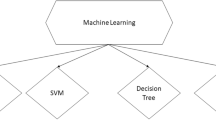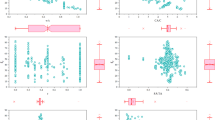Abstract
The paper presents the research work carried out to predict the 28-day compressive strength of concrete with supplementary materials such as ash (fly ash, bottom ash) and silica fume using various data mining techniques. It mimics the decision-making ability of humans in imprecise and incomplete information situations. The model developed consists of 7 input parameters i.e., contents of cement, fine aggregates, coarse aggregates, silica fume, ash, water to cement ratio, superplasticizers, and one output parameter that is compressive strength at 28 days. The models used i.e., Gaussian Process (GP), Random Forest (RF), Artificial Neural Network (ANN) and ANN-Fire fly Algorithm (ANN-FFA) to estimate the compressive strength (MPa) at 28 days. The model developed is completely based on experimental data obtained from creditable literature available. The result of modeling techniques suggests that ANN-FFA based model works better than the other modeling techniques used in this study with Mean Square Error = 1.8099, Root Mean Square Error = 2.6584, and Coefficient of Correlation = 0.9370 with the testing dataset. Hence, these computational techniques suggest that it can be used to estimate the compressive strength of concrete at any stage. The sensitivity study concludes that RF is more sensitive to the absence of important parameters and less sensitive to the lack of less important parameters. Sensitivity analysis results using RF model suggest that Silica fume (kg/m3) is the most important parameter for estimate the compressive strength of concrete using this data set.








Similar content being viewed by others
References
Abdulmatin A, Weerachart T, Chai J (2018) An investigation of bottom ash as a pozzolanic material. Constr Build Mater 186:155–162
Aggarwal P, Aggarwal Y, Gupta SM (2007) Effect of bottom ash as replacement of fineaggregates in concrete. Asian J Civil Eng (building and Housing) 8(1):49–62
Aggarwal Y, Aggarwal P, Sihag P, Pal M, Kumar A (2019) Estimation of punching shear capacity of concrete slabs using data mining techniques. Int J Eng 32(7):908–914
Ali K, Qureshi MI, Saleem S, Khan SU (2021) Effect of waste electronic plastic and silica fume on mechanical properties and thermal performance of concrete. Constr Build Mater 285:122952
Ben-Daya M, Al-Fawzan M (1998) A tabu search approach for the flow shop schedulingproblem. Eur J Oper Res 109(1):88–95
Bilgehan M (2011) A comparative study for the concrete compressive strength estimation usingneural network and neuro-fuzzy modelling approaches. Nondestructive Testing Evaluation 26(01):35–55
Breiman L (1996) Bagging predictors. Mach Learn 24(2):123–140
Breiman L (1999) Random forests Random Features. Statistics Department. University of California, Berkeley
Breiman L (2001) Random forests. Mach Learn 45(1):5–32
Daneshfaraz R, Hasannia V, Norouzi R, Sihag P, Sadeghfam S, Abraham J (2021) Investigating the effect of horizontal screen on hydraulic parameters of vertical drop. Iran J Sci Technol, Trans Civil Eng 45(3):1909–1917
Ebtehaj I, Bonakdari H, Shamshirband S, Ismail Z, Hashim R (2016) New approach to estimate velocity at limit of deposition in storm sewers using vector machine coupled with firefly algorithm. J Pipel Syst Eng Practice 8(2):04016018
Faseyemi VA (2005) Investigation on fly ash as a partial cement replacement in concrete. Int J Sci Eng Res. https://citeseerx.ist.psu.edu/viewdoc/download?doi=10.1.1.302.6020&rep=rep1&type=pdf
Gazi V, Passino KM (2004) Stability analysis of social foraging swarms. IEEE Trans Syst, Man, Cyber Part B (cybernetics) 34(1):539–557
Hashemi SSG, Mahmud HB, Djobo JNY, Tan CG, Ang BC, Ranjbar N (2018) Microstructural characterization and mechanical properties of bottom ash mortar. J Clean Product 170:797–804
Haykin S (1994) Neural networks: a comprehensive foundation. Prentice Hall PTR, UK
Jain S, Barai SV (2018) Prediction of compressive strength of concrete using M5’model tree algorithm: A parametric study. progress in advanced computing and intelligent engineering. Springer, Singapore, pp 425–432
Kadam MP, Patil YD (2013) Effect of coal bottom ash as sand replacement on the properties ofconcrete with different w/c ratio. Int J Adv Technol Civil Eng 2(1):2231–5721
Keshavarz Z, Torkian H (2018) Application of ANN and ANFIS Models in determining compressive strength of concrete. Soft Comput Civil Eng 2(1):62–70
Kumar M, Sihag P, Singh V (2019) Enhanced soft computing for ensemble approach to estimate the compressive strength of high strength concrete. J Mater Eng Struct JMES 6(1):93–103
Kuss M (2006) Gaussian process models for robust regression, classification, and reinforcement learning. Technische Universität, UK
Liaw A, Wiener M (2002) Classification and regression by random Forest R news 2(3):18–22
Mohammed A, Rafiq S, Sihag P, Kurda R, Mahmood W, Ghafor K, Sarwar W (2020a) ANN, M5P-tree and nonlinear regression approaches with statistical evaluations to predict the compressive strength of cement-based mortar modified with fly ash. J Market Res 9(6):12416–12427
Mohammed A, Rafiq S, Sihag P, Mahmood W, Ghafor K, Sarwar W (2020b) ANN, M5P-tree model, and nonlinear regression approaches to predict the compression strength of cement-based mortar modified by quicklime at various water/cement ratios and curing times. Arab J Geosci 13(22):1–16
Mohammed A, Rafiq S, Sihag P, Kurda R, Mahmood W (2021) Soft computing techniques: systematic multiscale models to predict the compressive strength of HVFA concrete based on mix proportions and curing times. J Build Eng 33:101851
Parsaie A, Haghiabi A (2015) The effect of predicting discharge coefficient by neural network on increasing the numerical modeling accuracy of flow over side weir. Water Resour Manage 29(4):973–985
Pindeo M (2002) Scheduling: Theory, Algorithms, And Systems. Prentice Hall, USA
Pyo S, Kim HK (2017) Fresh and hardened properties of ultra-high performance concreteincorporating coal bottom ash and slag powder. Constr Build Mater 131:459–466
Rafieizonooz M, Mirza J, Salim MR, Hussin MW, Khankhaje E (2016) Investigation of coal bottom ash and fly ash in concrete as replacement for sand and cement. Constr Build Mater 116:15–24
Rani K, Suthar M, Sihag P, Boora A (2021) Experimental investigation and prediction of strength development of GGBFS-, LFS- and SCBA-based green concrete using soft computing techniques. Arab J Geosci 14:2612. https://doi.org/10.1007/s12517-021-08869-4
Salih A, Rafiq S, Sihag P, Ghafor K, Mahmood W, Sarwar W (2021) Systematic multiscale models to predict the effect of high-volume fly ash on the maximum compression stress of cement-based mortar at various water/cement ratios and curing times. Measurement 171:108819
Sani MSHM, Muftah F, Muda Z (2011) The properties of special concrete using Washed Bottom Ash (WBA) as partial sand replacement. Int J Sustain Constr Eng Technol 1(2):65–76
Shahmansouri AA, Yazdani M, Ghanbari S, Bengar HA, Jafari A, Ghatte HF (2021) Artificial neural network model to predict the compressive strength of eco-friendly geopolymer concrete incorporating silica fume and natural zeolite. J Clean Product 279:123697
Siddique R (2003) Effect of fine aggregate replacement with Class F fly ash on the mechanical properties of concrete. Pergamon, Cement Concr Res 33:539–547
Siddique R, Aggarwal P, Aggarwal Y (2011) Prediction of compressive strength of self compacting concrete containing bottom ash using artificial neural networks. Adv Eng Softw 42(10):780–786
Sihag P, Singh B, SepahVand A, Mehdipour V (2018) Modeling the infiltration process with softcomputing techniqes. ISH J Hydr Eng. https://doi.org/10.1080/09715010.2018.1439776
Sihag P, Suthar M, Mohanty S (2021) Estimation of UCS-FT of dispersive soil stabilized with fly ash, cement clinker and GGBS by artificial intelligence. Iran J Sci Technol, Trans Civil Eng 45(2):901–912
Singh B, Sihag P, Singh K (2017) Modelling of impact of water quality on infiltration rate of soil by random forest regression. Model Earth Syst Environ 3(3):999–1004
Singh N, Mithulraj M, Arya S (2018) Influence of coal bottom ash as fine aggregates replacement on various properties of concretes: a review resources. Conserv Recycl 138:257–271
Sivalingam K, Jayanthi S, Samson KJDS (2012) Mechanical properties of concrete composites with replacement of class c fly ash and silica fume. Int J Sci Eng Res 3(9):2229–5518
Sunayana S, Barai SV (2019) Performance of fly ash incorporated recycled aggregates concrete column under axial compression: Experimental and numerical study. Eng Struct 196:1–12
Tanyildizi H, Çevik A (2010) Modeling mechanical performance of light weight concrete containing silica fumes exposed to high temperature using genetic programming. Const Build Mater 24:2612–2618
Thakur MS, Pandhiani SM, Kashyap V, Upadhya A, Sihag P (2021) Predicting bond strength of FRP bars in concrete using soft computing techniques. Arab J Sci Eng 46(5):4951–4969
Upadhya A, Thakur MS, Sharma N, Sihag P (2021) Assessment of soft computing-based techniques for the prediction of marshall stability of asphalt concrete reinforced with glass fiber. Int J Pavem Res Technol. https://doi.org/10.1007/s42947-021-00094-2
Varadharajan S (2020) Determination of mechanical properties and environmental impact due to inclusion of flyash and marble waste powder in concrete. Structures 25:613–630
Williams CK, Rasmussen CE (2006) Gaussian processes for machine learning. The MIT Press 38:715–719
Yang XS (2008) Firefly algorithm. Nature-inspired metaheuristic algorithms. Luniver Press, UK
Yang XS (2009) Firefly algorithms for multimodal optimization. In: International symposium on stochastic algorithms. Springer, Berlin, Heidelberg, pp 169–178
Yang XS (ed) (2013) Cuckoo search and firefly algorithm: theory and applications, vol 516. Springer
Yaseen ZM, Deo RC, Hilal A, Abd AM, Bueno LC, Salcedo-Sanz S, Nehdi ML (2018) Predicting compressive strength of lightweight foamed concrete using extreme learning machinemodel. Adv Eng Softw 115:112–125
Yaseen ZM, Ghareb MI, Ebtehaj I, Bonakdari H, Siddique R, Heddam S, Yusif AA, Deo R (2018b) Rainfall pattern forecasting using novel hybrid intelligent model based ANFIS-FFA. Water Resour Manag 32(1):105–122
Yazici S, Arel HS (2012) Effect of fly ash fineness on the mechanical properties of concrete. Sadhana 37(3):389–403
Yetilmezsoy K, Sihag P, Kıyan E, Doran B (2021) A benchmark comparison and optimization of Gaussian process regression, support vector machines, and M5P tree model in approximation of the lateral confinement coefficient for CFRP-wrapped rectangular/square RC columns. Eng Struct 246:113106
Author information
Authors and Affiliations
Corresponding author
Rights and permissions
About this article
Cite this article
Aggarwal, Y., Aggarwal, P., Sihag, P. et al. Evaluation and Estimation of Compressive Strength of Concrete Using Hybrid Modeling Techniques. Iran J Sci Technol Trans Civ Eng 46, 3131–3145 (2022). https://doi.org/10.1007/s40996-021-00812-7
Received:
Accepted:
Published:
Issue Date:
DOI: https://doi.org/10.1007/s40996-021-00812-7




